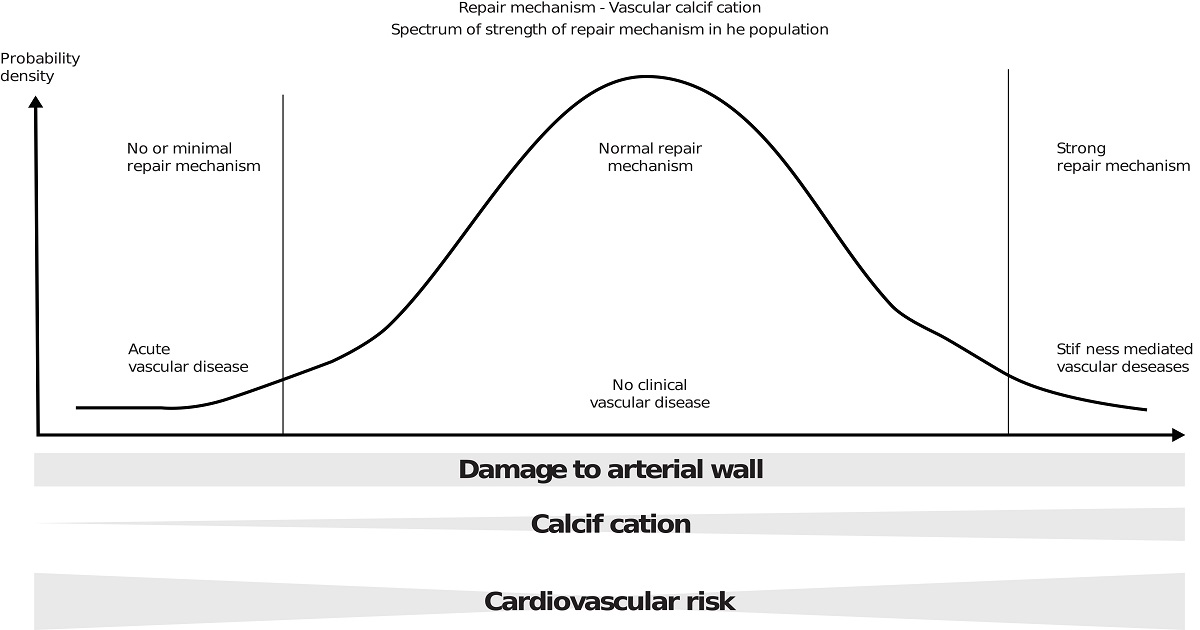Arterial Calcification as a Repair Mechanism in Health and Disease
A special issue of Journal of Clinical Medicine (ISSN 2077-0383). This special issue belongs to the section "Nuclear Medicine & Radiology".
Deadline for manuscript submissions: closed (25 January 2025) | Viewed by 2088

Special Issue Editor
Interests: arterial wall calcification in the arteries; radiography and computed tomography detection of calcifications in arteries; abdominal aortic calcification; pseudoxanthoma elasticum; computerised tomography; medical image processing; blood vessels; diagnostic radiography; haemorheology; image segmentation; biomedical imaging
Special Issue Information
Dear Colleagues,
With aging, nearly all people develop arterial calcifications somewhere in the body, but most people do not experience vascular disease or die from it. These calcifications are linked to atherosclerosis and can lead to obstructive acute disease and arteriosclerosis, sometimes leading to vessel stiffness and chronic vascular disease. Although these calcifications can be the cause of vascular disease, they sometimes protect against it. These apparently contradictory findings are best explained when the calcification process is seen as a repair mechanism that is normally sufficient and able to adequately repair arterial damage, plaques and aneurysms. In some people, however, the mechanism is suboptimal, being either too low (insufficient) or too high (hyperactive), thus causing diseases. In light of this, much knowledge is required about different vascular territories. In this Special Issue, we are looking for original research and review papers that increase and summarise our knowledge of vascular calcifications in the cerebral vessels, the aorta, the coronaries, the female mammary (breast) arteries, and the peripheral arteries. Furthermore, articles that discuss the rare monogenetic diseases linked to calcification and the way in which they can be models for studying how calcifications could cause disease in the general population are of interest. Finally, manuscripts discussing the modulation of the calcification process, which has been shown to be possible with old and new medication, are requested. By integrating existing and new knowledge, we hope that this Special Issue will improve our understanding of arterial calcifications.
Prof. Dr. Willem P. T. M. Mali
Guest Editor
Manuscript Submission Information
Manuscripts should be submitted online at www.mdpi.com by registering and logging in to this website. Once you are registered, click here to go to the submission form. Manuscripts can be submitted until the deadline. All submissions that pass pre-check are peer-reviewed. Accepted papers will be published continuously in the journal (as soon as accepted) and will be listed together on the special issue website. Research articles, review articles as well as short communications are invited. For planned papers, a title and short abstract (about 100 words) can be sent to the Editorial Office for announcement on this website.
Submitted manuscripts should not have been published previously, nor be under consideration for publication elsewhere (except conference proceedings papers). All manuscripts are thoroughly refereed through a single-blind peer-review process. A guide for authors and other relevant information for submission of manuscripts is available on the Instructions for Authors page. Journal of Clinical Medicine is an international peer-reviewed open access semimonthly journal published by MDPI.
Please visit the Instructions for Authors page before submitting a manuscript. The Article Processing Charge (APC) for publication in this open access journal is 2600 CHF (Swiss Francs). Submitted papers should be well formatted and use good English. Authors may use MDPI's English editing service prior to publication or during author revisions.
Keywords
- arterial calcification
- repair mechanism
- general population
- rare diseases
- vascular disease
Benefits of Publishing in a Special Issue
- Ease of navigation: Grouping papers by topic helps scholars navigate broad scope journals more efficiently.
- Greater discoverability: Special Issues support the reach and impact of scientific research. Articles in Special Issues are more discoverable and cited more frequently.
- Expansion of research network: Special Issues facilitate connections among authors, fostering scientific collaborations.
- External promotion: Articles in Special Issues are often promoted through the journal's social media, increasing their visibility.
- Reprint: MDPI Books provides the opportunity to republish successful Special Issues in book format, both online and in print.
Further information on MDPI's Special Issue policies can be found here.






